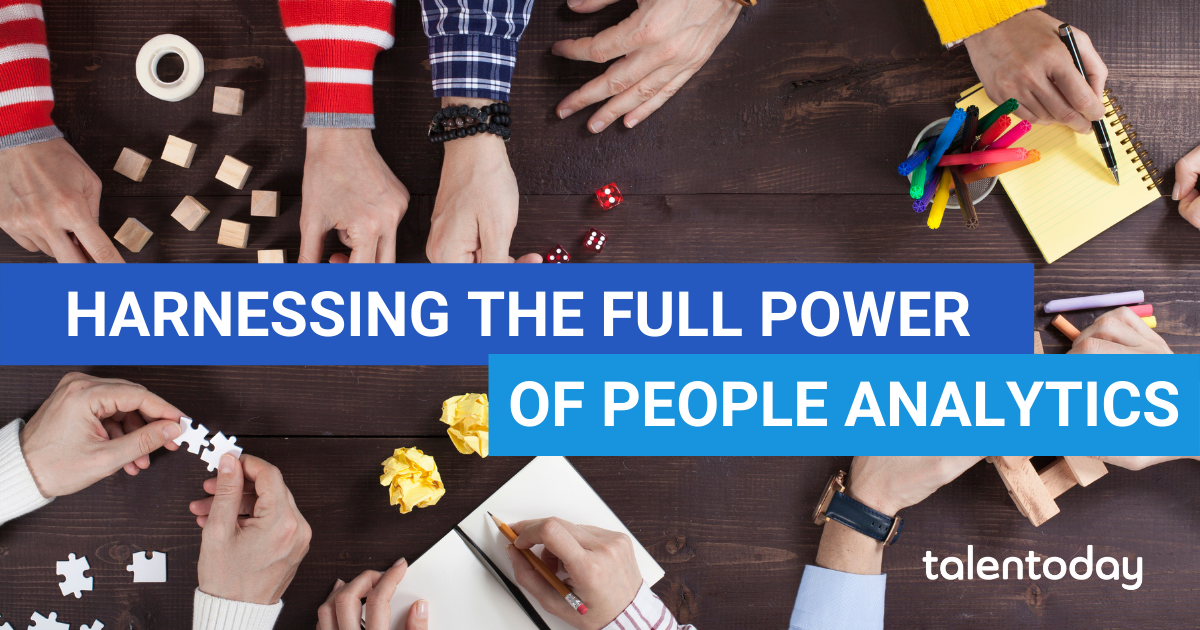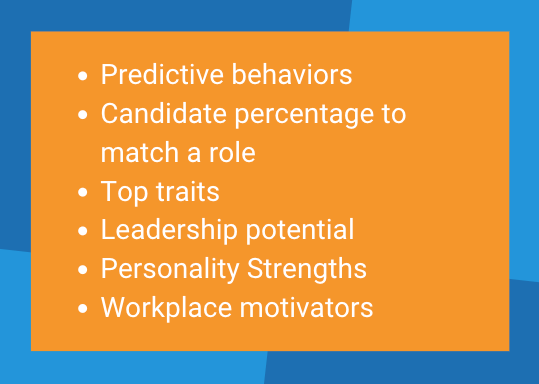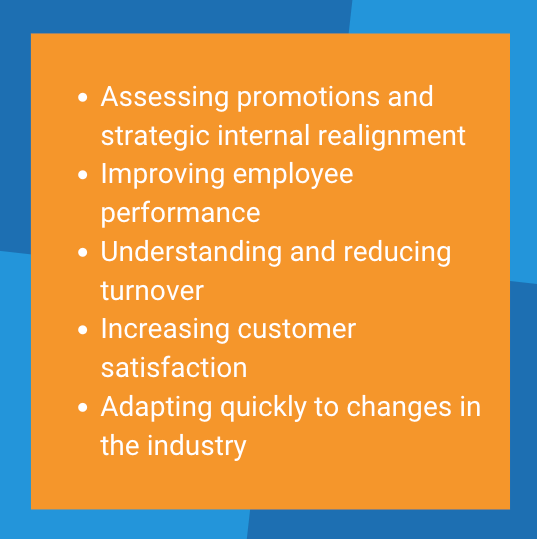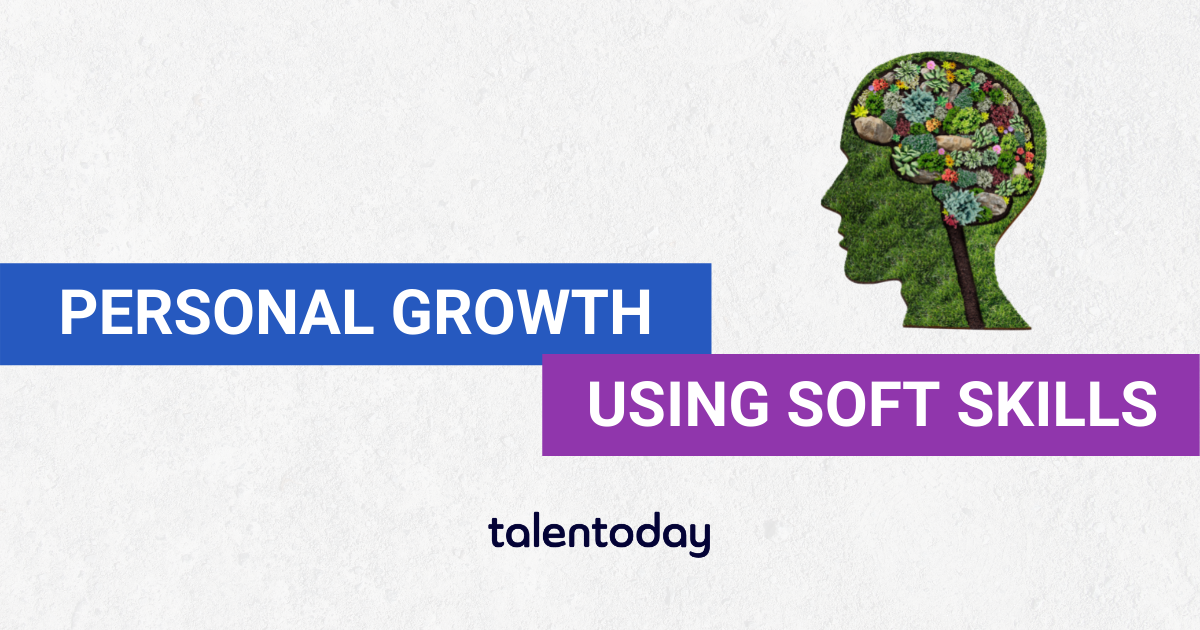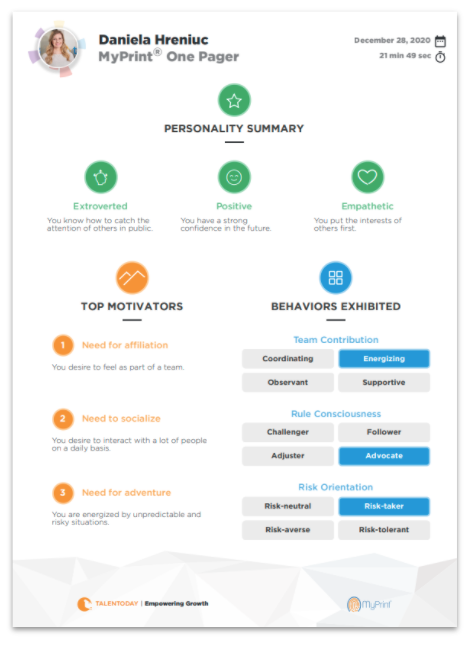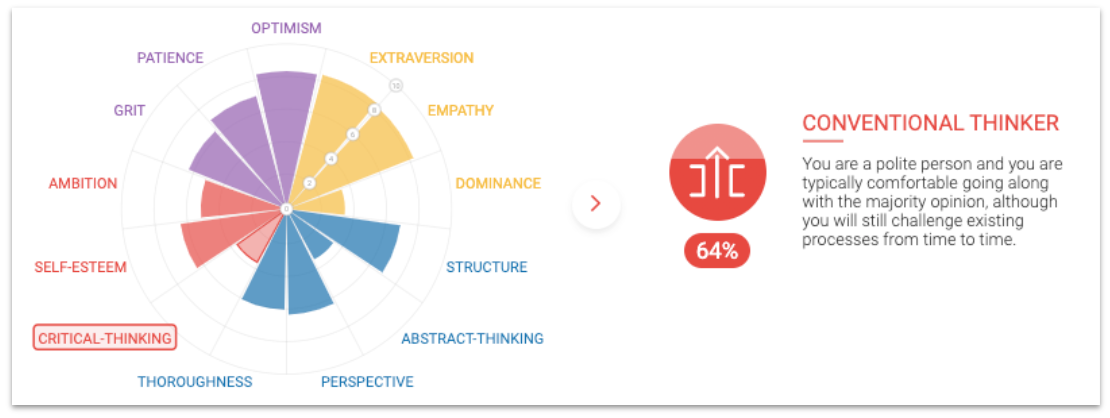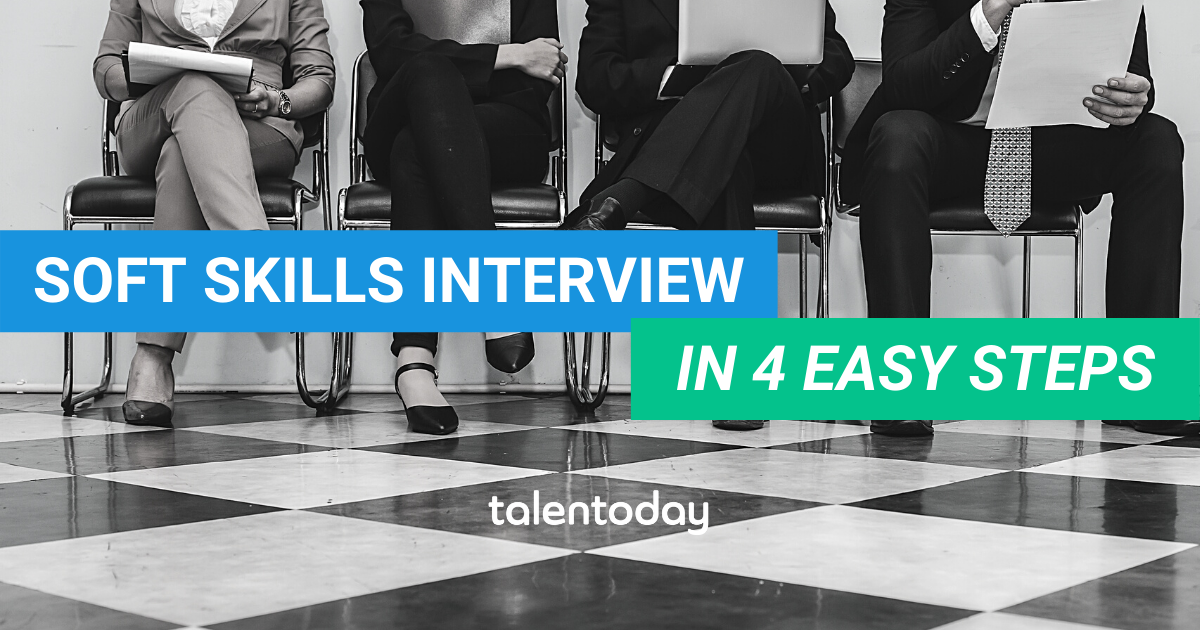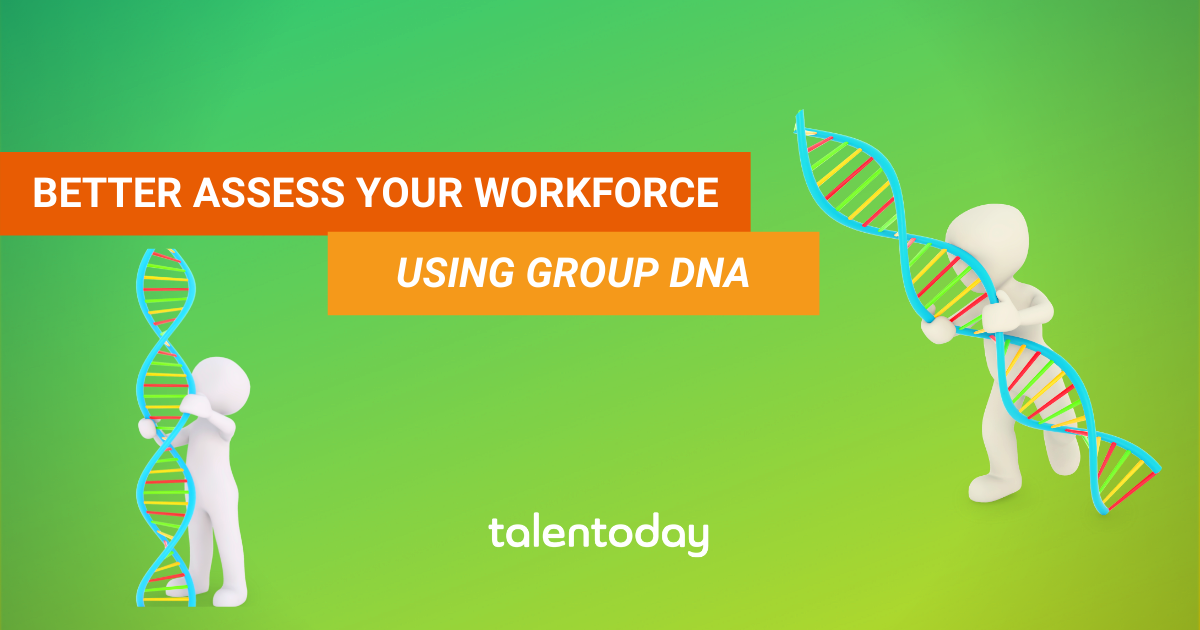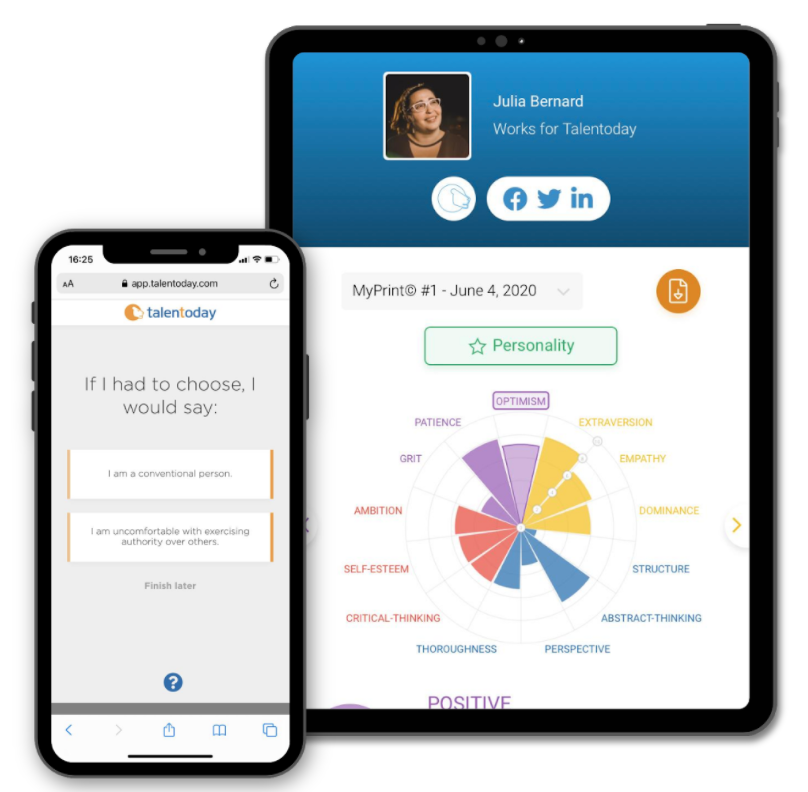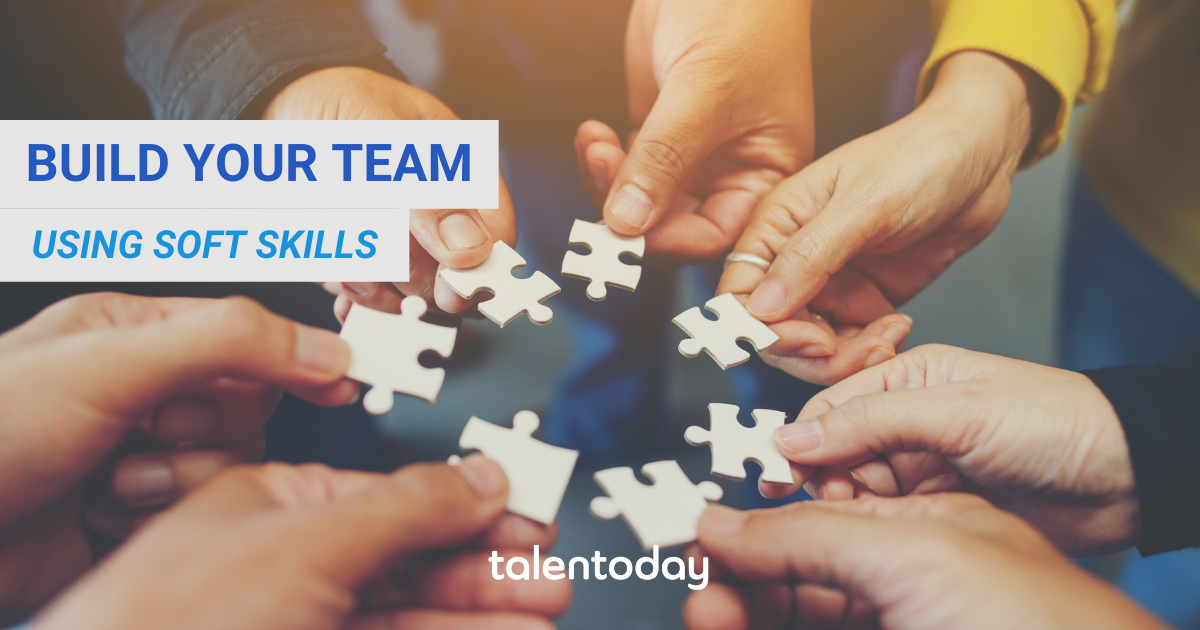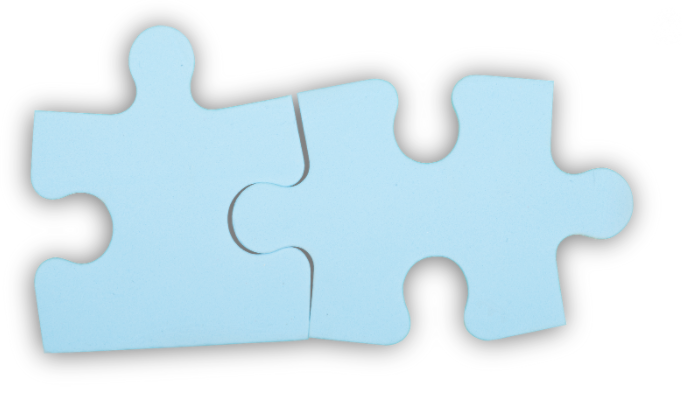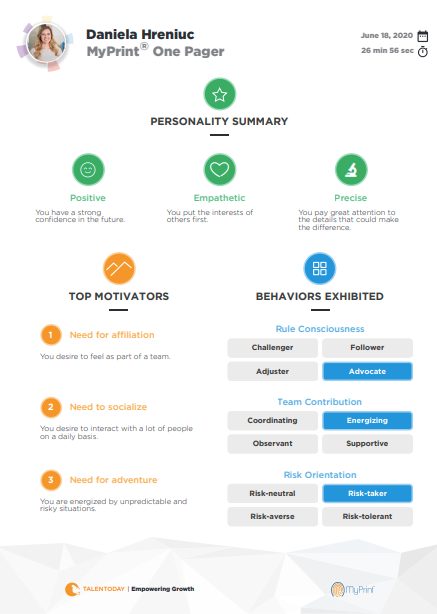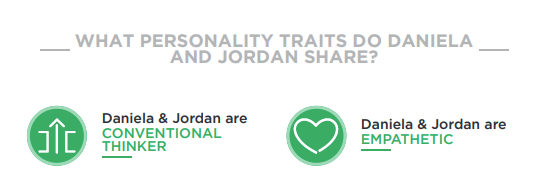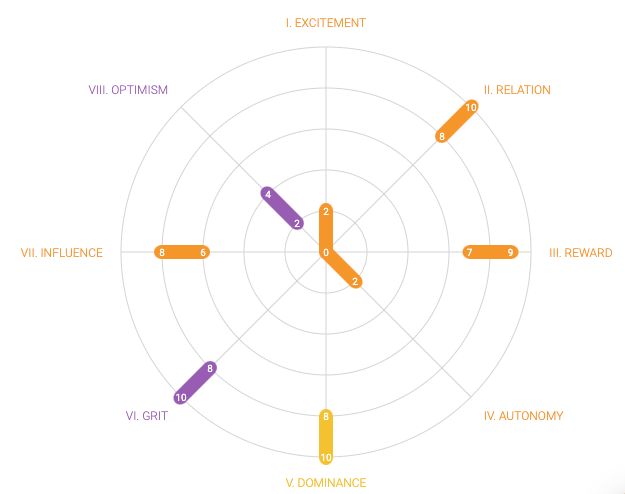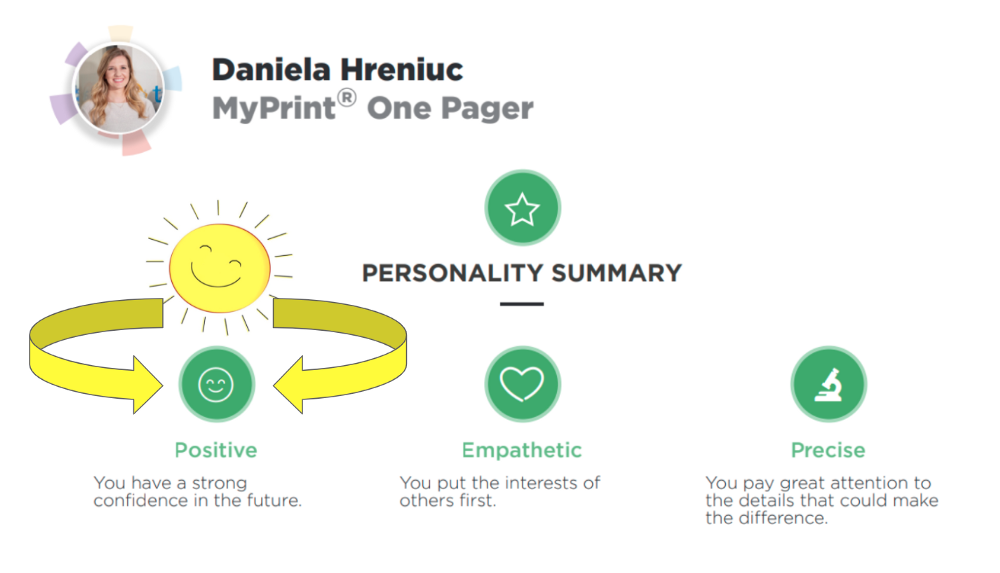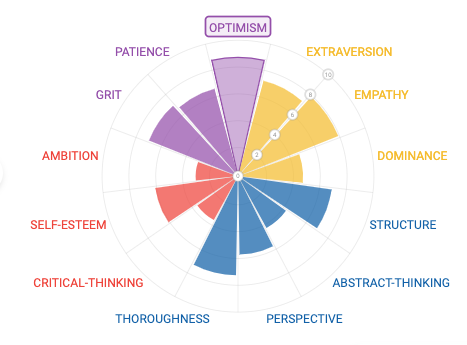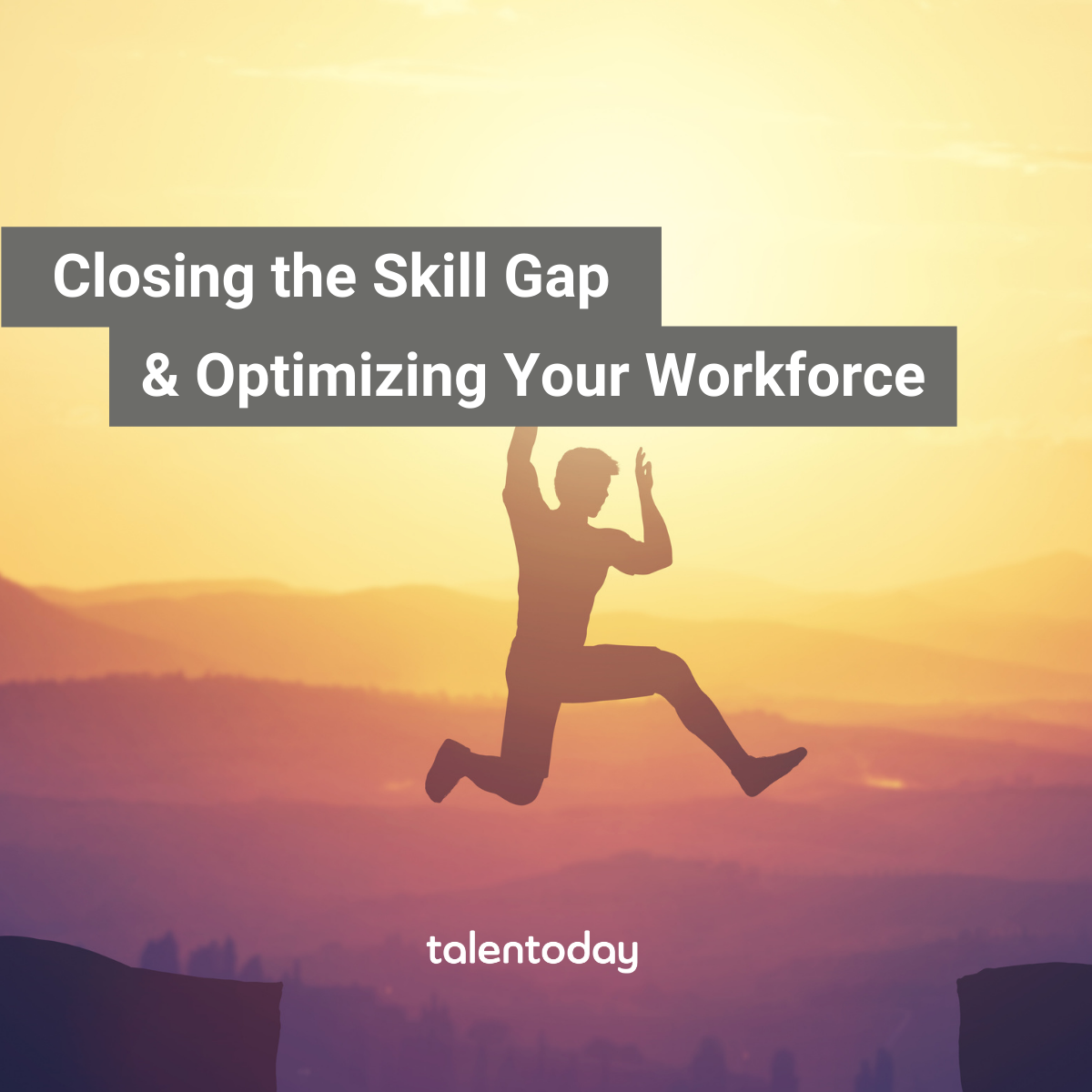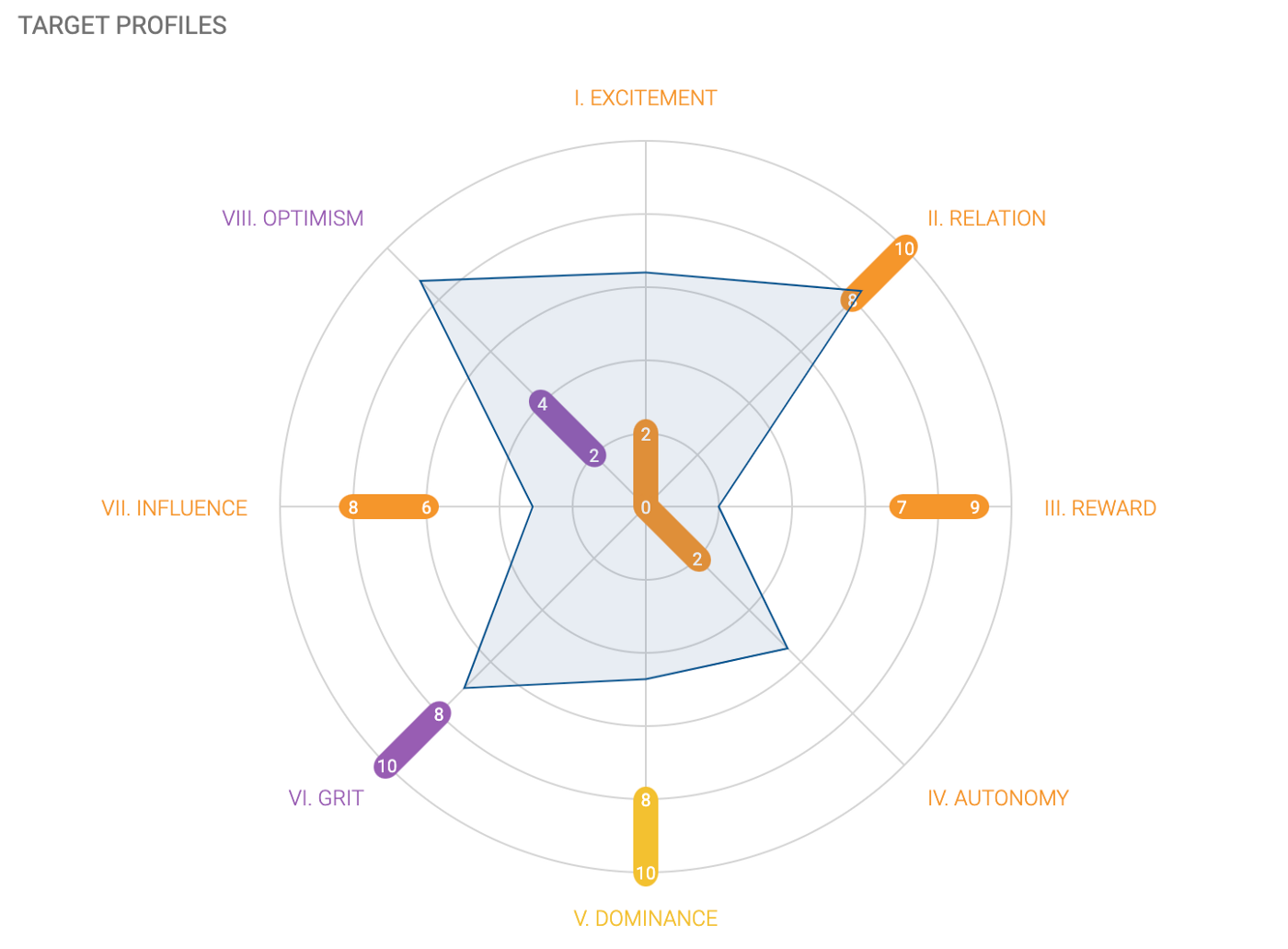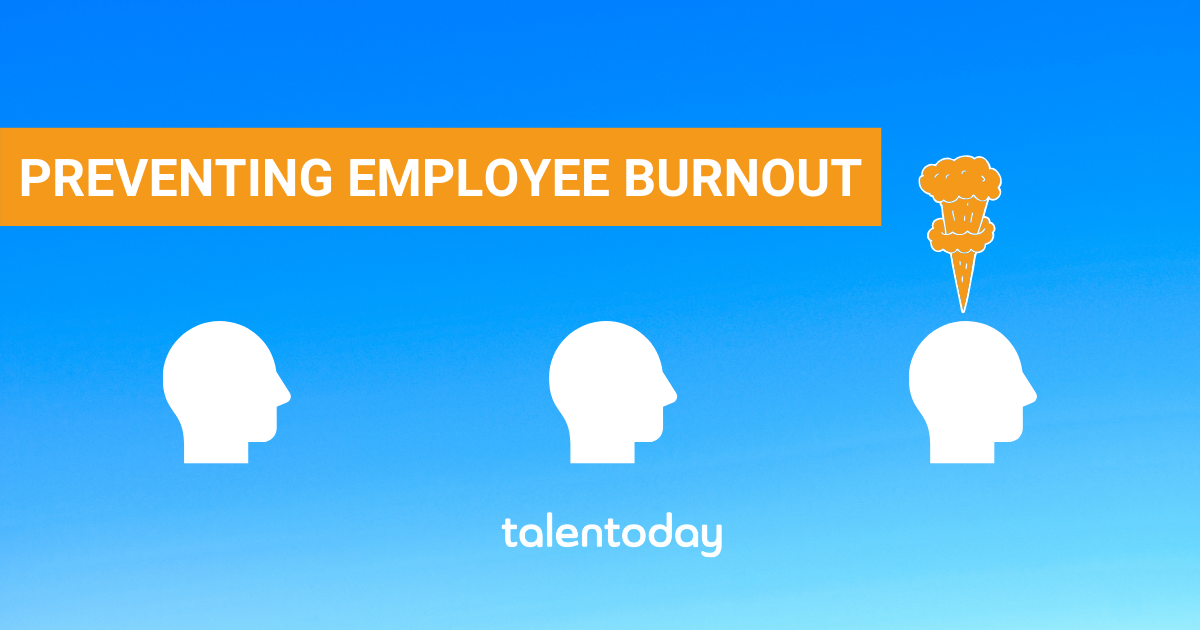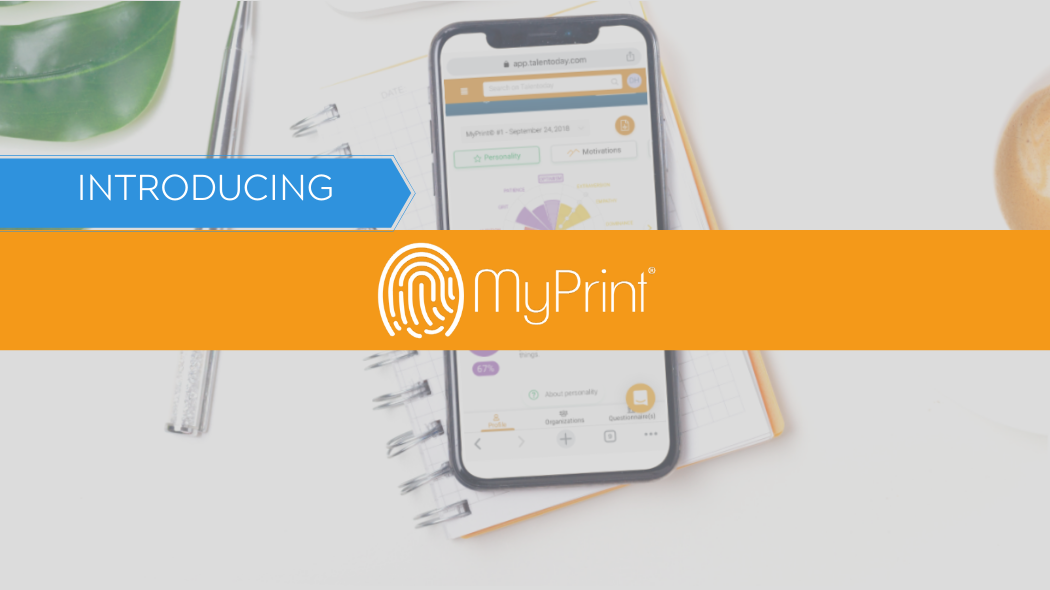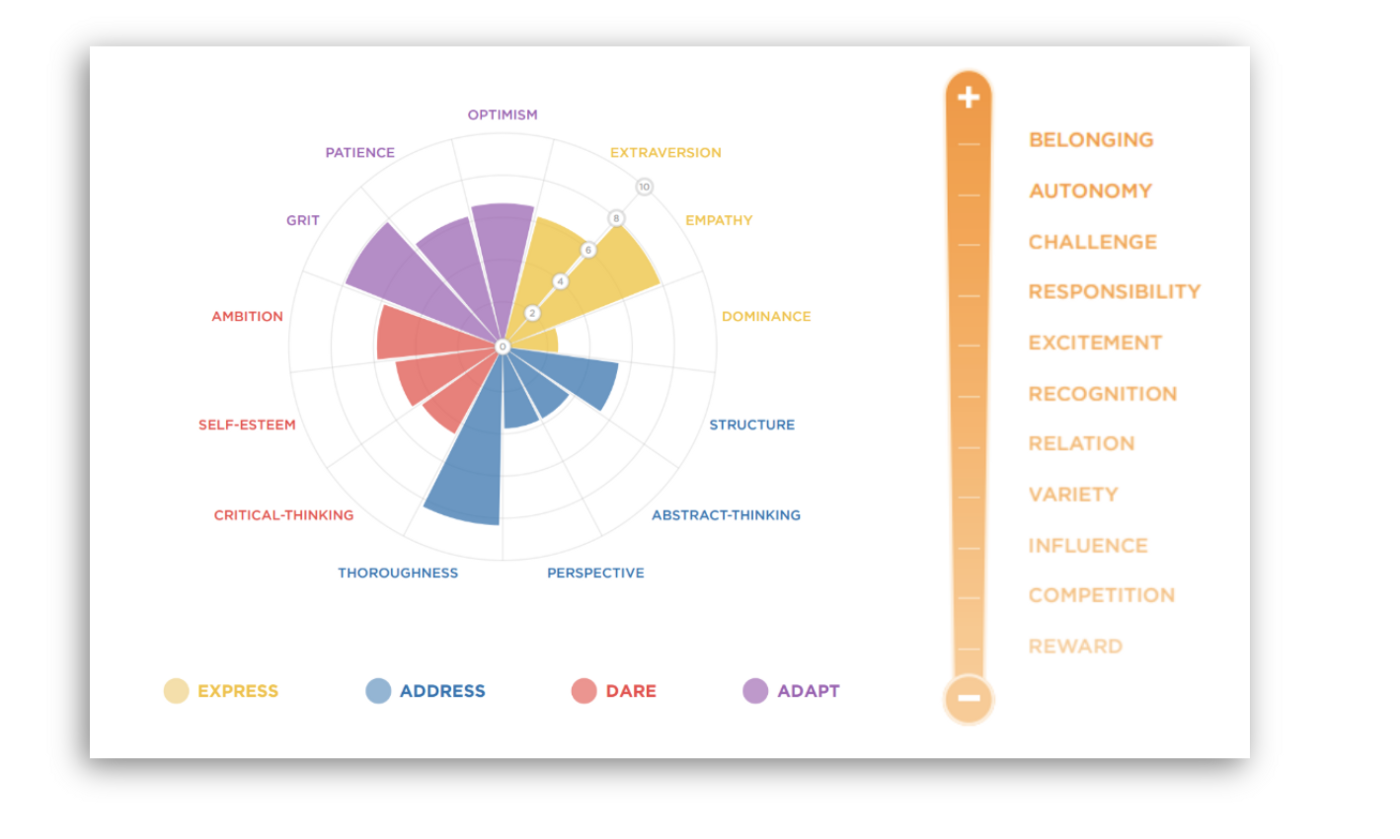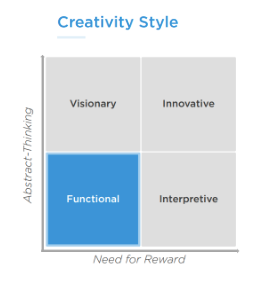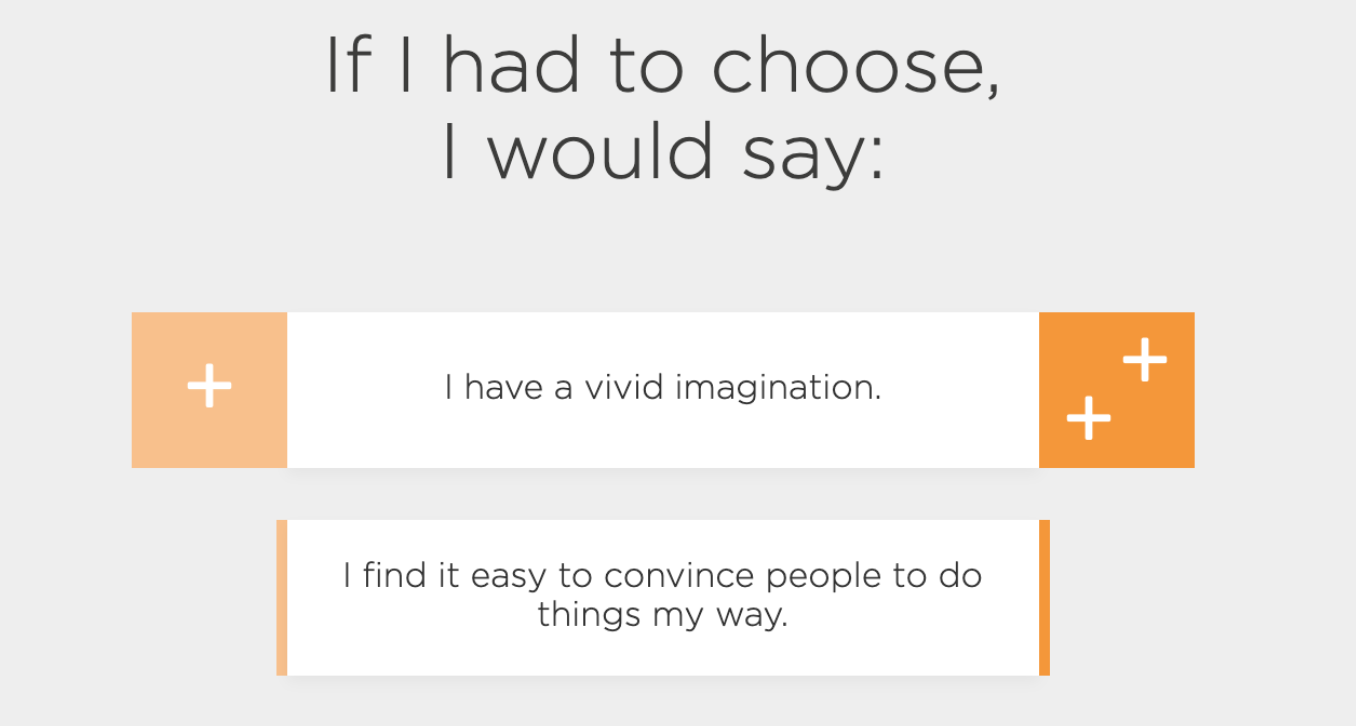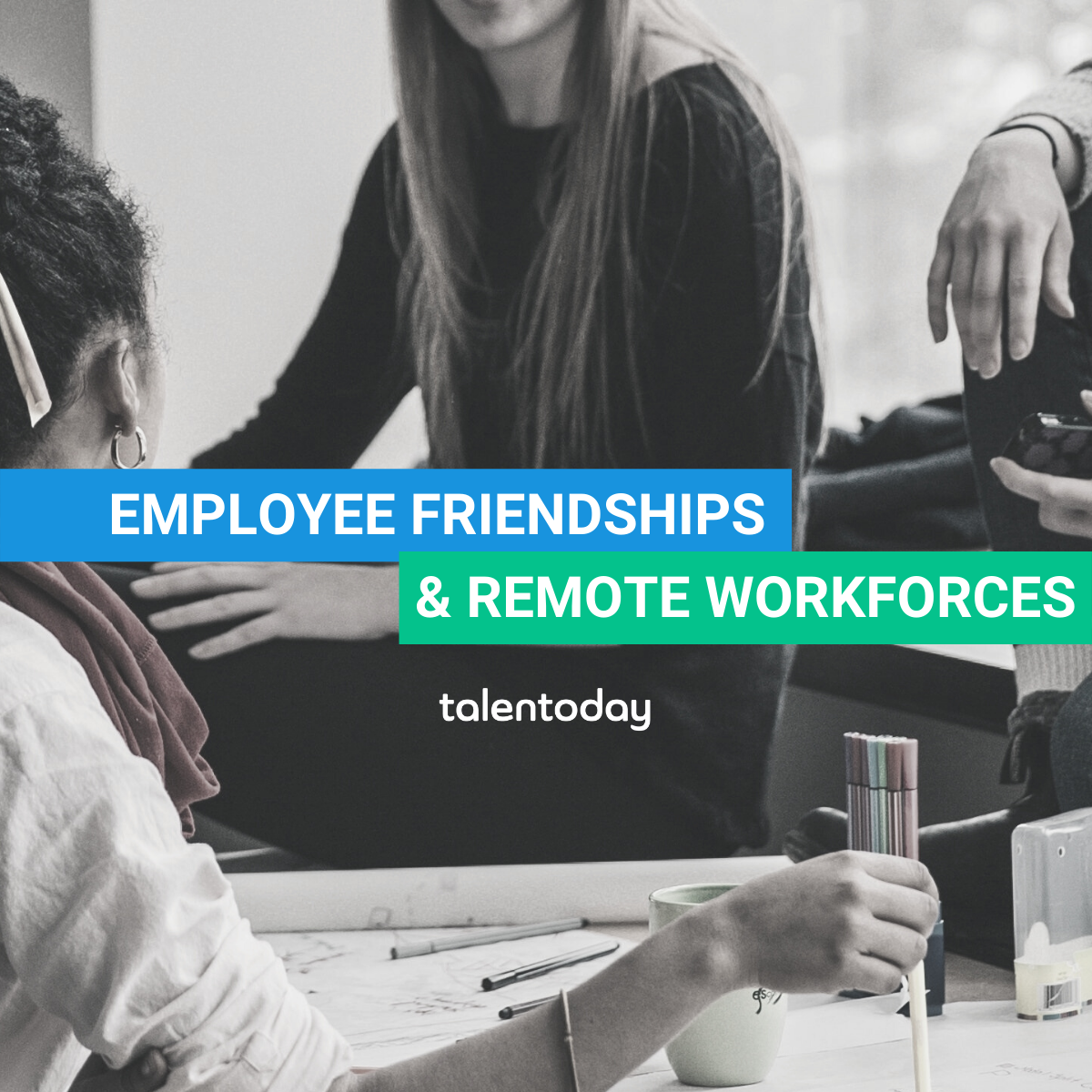Harnessing the Full Power of People Analytics
We all know that recruiting has inherent risk. A CareerBuilder survey found that nearly three in four employers have hired the wrong person for a position. Bad hires not only have a negative financial impact, but can reduce productivity and be a blow to company morale. Even if your initial hire is spot-on, keeping talented employees on board can be extremely challenging. That’s where people analytics comes in. It’s likely you’ve heard or read this phrase before — but what does it really mean?
People Analytics — The Short Version
HR Technologist defines people analytics as “the deeply data-driven and goal-focused method of studying all people processes, functions, challenges and opportunities at work to elevate these systems and achieve sustainable business success.” Simply put, people analytics is:
- Data driven — you need to gather data and use it
- Goal-focused — you need to know how the data will be used and what you want to improve
For human resource and staffing professionals, people analytics has the ability to transform the entire talent lifecycle, from recruitment, assessment and hiring to team building and development. McKinsey data shows that people analytics can lead to an 80% increase in recruiting efficiency and a 50% decrease in attrition. It can also help reduce bias in hiring by bringing in a diverse slate of candidates and create more inclusive workplaces by identifying discrimination.
It’s Only as Good as the Data
As with all science-driven solutions, people analytics is only as good as the data it’s being fed. While certain hard skills and experiences are easy to quantify, understanding soft skills and behavioral factors that determine lasting success requires sophisticated technology.
To get good data, you first need to identify your priorities and objectives. Are you trying to reduce the cost of candidate screenings? Improve the quality of your hires? Create a more diverse workforce? Upfront planning allows you to develop a rigorous candidate assessment, including customized interview questions, that gets to the root of each individual’s personality traits and behavioral and motivational factors. Some data points you may want to consider include:
Once the data is gathered and analyzed, it needs to be compiled in such a way that is accessible to the people that use it. For most of us, visual data representation provides a clear and concise picture that captures our attention and allows us to process the information more quickly.
How Can it Help Your Organization?
People analytics is critical for making better, more informed hiring decisions. While intuition is a valuable tool during recruiting, it shouldn’t be used in a vacuum. Instead, combining your gut instinct with science that uses algorithms and predictive analytics to develop a more accurate and complete talent profile will yield greater success.
Beyond hiring, people analytics is valuable for any area where people are involved in your business, including how you can leverage employee strengths for both the organization’s advantage and the individual’s career growth. Here are a few common examples of areas that businesses can benefit from gathering and using data throughout the employee life cycle:
It’s also important to note that people analytics should never be static. It needs to be a dynamic activity that evolves with individuals and teams as they move through the employment life cycle. The more employees and talent leaders use it, the more value and insights it delivers.
Where do I start?
If you’re looking to make a better placement, team building, and development decisions for employees and teams, assessing soft skills using people analytics software is a great place to start. To learn more about our scientifically-backed assessments, including MyPrint® and Talentoday Manager, email us at customer@talentoday.com. We believe that once you have more information about the personality and motivations of your employees, you’ll be able to make more informed decisions grounded in science.
Personal Growth Using Soft Skills
It’s human nature to hit a ‘reset button’ when time gives us a new beginning. That’s why gyms are the busiest on Mondays¹ and personal motivation skyrockets around birthdays². I can’t be the only person who has put off a personal goal for a couple of weeks because it’s the middle of December and January 1st is just around the corner.
Having those reset points are great for helping people set certain milestones and goals for themselves! However, self-improvement and professional development should be ongoing and not dependent on the start of a week, month, or year. There are many ways to go about continuous development: reading books or articles, finding a mentor, or watching videos and webinars are a few great places to start. Although you can take a guess at what areas you should focus on, today we are going to use science to help determine your strengths and improvement areas!
First Thing’s First: Take MyPrint®
If you haven’t taken MyPrint® already then stop reading this and take that first — it’s FREE! All you have to do is go to talentoday.com to create your free account. The assessment itself will only take about 30 minutes to complete. If you are reading this and your MyPrint® is over 6 months old we would recommend spending 30 minutes on a retake.
If you have previously taken MyPrint®, compare your two results and see what you find. Look for the areas where there is the most difference and see if you can determine what the reasons for areas of growth have been. Maybe you have had a life change, a new position, or even relate it back to the global pandemic that took over 2020 — try to pinpoint why those scores have changed.
Discover Your Strengths
Now that you have taken MyPrint®, download your One Pager (soft-skills summary). We are going to be focusing on the personality and motivations section first and then we’ll look at the personality radar in the app later on.
Take a look at your top 3 strengths in the green Personality Summary section of your One Pager. Write down unique ways that those can be useful in your current position at work or in your personal life.
Next take a look at the Top Motivators on your One Pager. Your top three motivators are listed out in orange. Determine if those needs are currently being met in your work life and if they are not, then write down some examples of how you can incorporate those into your daily work environment.
Find Your Improvement Areas
Now that we’ve looked at your strengths from the One Pager a little bit more, we’re going to go back into the app to spend some time looking at the personality radar! If you aren’t sure how to read your radar you can get an in depth overview by clicking the ‘About personality’ button in your profile.
Essentially each of the bars in the radar represents a different personality dimension. You are either towards the inside of the radar, or the outside. Although your first impression might be that the areas towards the inside of the radar are the areas that you need to grow — that is not always the case! For example, someone who needs to be providing concrete solutions to a team might struggle if they are extremely high on the ‘Abstract-Thinking’ dimension.
After you have taken some time to read your radar for a little bit, find those areas that you want to move either up or down on that radar. For example, when I look at my radar I see that my Critical-Thinking scale is a little bit lower than I would like. I am a Conventional Thinker — which isn’t bad at all! However, there are a lot of aspects in my role where I am called upon as a subject matter expert, so I want to ensure that I am not going to just go along with things because that’s what the majority wants. So this year I am going to make a conscious effort to ask more questions about the things that are presented to me so that I can get into a more naturally critical mindset.
Now it’s your turn! I can find about 4 other improvement areas when I look at my radar, but they are all based on my current work situation. Again, this doesn’t mean that I think my current soft skills are bad, it just means that I am aware that in order to grow professionally, I need to be continuously working on my development!
Put Together A Plan
Now that you know your improvement areas, focus on them! Find some books, TED Talks, or articles that you can spend time on each week to help you grow and develop. The second step here is to put together some concrete examples of how you can grow. For example, if you are a Focused individual but want to be more Big Picture — the next time you are planning out a project make a note to specifically think of that Big Picture outcome as you plan and go about your work.
Make a note of people that you work with or know who you think have those traits you are looking for. Does your manager seem to have those Critical Thinking skills that you desire? Make a note to pay attention to how she gives feedback or responds to new ideas in meetings. Maybe your coworker seems to be the most relaxed person on the planet. Take note of how he handles those times of stress and busy times.
Watch Your Growth!
Take MyPrint® again in 6 months. See how much you have grown and developed in those areas, and think of some concrete examples of how your soft skill strengths have helped you succeed in your professional life. The goal here is not to be perfect or ever be done, it is to get yourself into the mindset of continuously growing and developing your strengths.
Looking for additional resources and support? Email Talentoday at customer@talentoday.com to learn more about our assessment and services!
Sources
How to Conduct a Soft Skills Interview in 4 Easy Steps
If you have been following our blog then you know how important we think soft skills are to incorporate into your daily work lives.
“Hard skills will get you the job, but soft skills will make you successful.” -Me, at least 3 times per week
However, sometimes this can seem overwhelming. Where should you, as a manager, start? In this blog article we will take a step-by-step look at how to use soft skills from the very beginning of the employee lifecycle: the interview process.
Step 1: The Job Requirements
At first glance, you might think you know what goes into a position. Maybe you have been hiring for this position for quite some time, or you have worked with individuals in this role before. Although you might think you know all of the important requirements for a role, it is still important to take the proper steps to evaluate a job description in order to make a more informed decision on what the role entails.
Once you have determined what hard skills and qualifications are necessary for a position, it is time to determine what soft skills will help someone be successful in this role. There are many ways to find this information. Here are a few of the common ones:
It is very important that you are using a scientifically reliable and valid method to assess your teams’ soft skills. For the purpose of this article, we recommend using the MyPrint® assessment to assess your current workforce and using some of our tools available through Talentoday Manager to determine what to look for during the interview process.
An important note here: although you are looking for commonalities among your top performers, that does not mean that you want a cookie cutter of those individuals. One of the most important things for a team’s success is having diversity among group members to help fill in skills gaps and increase creativity and innovation¹.
Step 2: Preparation
Now that you have determined what the important soft skills are for the position, you need to prepare for the interview. Having a set interview process helps to ensure that you are making more informed decisions for your company and not using personal judgments or unconscious biases when hiring. Topgrading² is one example of an interview methodology that is intended to help identify top talent, and incorporating soft skills into this methodology is seamless.
Prior to the interview starting, you will also want your candidates to complete a MyPrint® assessment (check that their results are from the past 6 months to ensure accuracy). Make sure that the hiring manager and anyone involved in the interview process have taken the time to review the candidate’s MyPrint® One Pager (soft skills summary) and are familiar with the soft skills that have been determined important for the role.
To prepare for the soft skills portion of the interview, we recommend that you have the Premium Report version of the candidate’s results handy and review their top 3 personality strengths, motivators, and behaviors (as shown on the One Pager report). Then ask yourself the following questions:
Lastly, take a look at the candidate’s behaviors. The MyPrint® Premium Report has two interview questions tailored to each behavioral style to help gain a better understanding of how that individual showcases those styles. Make a note of any behaviors that you would like to dig deeper on, and have those interview questions ready to go!
Step 3: Conducting the Interview
When conducting a soft skills interview, it is important to stay open minded. If someone’s top three MyPrint® traits aren’t the exact three that you are looking for that does not mean they are not going to be a good candidate. Instead, look at their Premium Report to see where they fall on the scale for each of those traits. Take the time to ask questions around those topics, and make sure that you are being clear about the role expectations and see if that matches what they are looking for.
Step 4: Scoring the Interview
Once the interview is completed and the candidate has left, it is not time to make a decision quite yet! Take the time to review your interview notes and apply some quantitative metrics to what you were looking at.
To ensure fairness between candidates, use a standardized method of scoring the interviews. Grading methods can include ranking responses or finding the difference between ideal scores and actual scores in their MyPrint® scales.
To Sum It All Up…
Using soft skills in the interview process can help you make more informed hiring decisions, and help you find candidates who will be more successful in their role. The interview process is an investment for everyone involved, so it is not something that should be done without careful evaluation and purpose.
Remember to be open-minded when it comes to soft skills; you won’t have all of the answers right away. As you gather more information over time you will learn more about what personality traits, motivations, and behavioral styles can be attributed to success in a role and sometimes, what you find might surprise you!
Want more information about soft skill interviewing, or to receive a copy of our template? Email Talentoday at customer@talentoday.com to learn more about our assessment and services!
Sources
Better Assess Your Workforce Using Group DNA
Every living organism is made up of a unique genetic code of DNA. Although the same organic components are used the outcomes can be vastly different from one another. The same thing goes with teams. Think of your work team as a strand of DNA. Some team members might share certain common traits with one another, and those become a prominent part of your overall team behavior. Similarly, having variety in your strengths can also increase team synergy. Losing parts of your team, rearranging responsibilities, or adding more members to your group can all impact the outcomes, and being able to effectively measure and assess your workforce enables you to understand and guide your team to reach their full potential.
Assessing for hiring
There are multiple things to consider when assessing a new hire for your team. Having a thorough understanding of their background and skills, for example, are important for making sure that the individual has the ability to do the job. These things can be assessed using various methods such as Structured Interviews, reference checks, and based on education or previous experience.
Another important aspect to consider when hiring for your team are the soft skills that an individual possesses. Finding the strengths that they will bring to your team and seeing how they will fit in with your team’s current soft skill DNA are important to maximize each person’s potential and help your team to stay engaged and successful in their work.
When assessing individuals’ soft skills be sure to use a valid and reliable tool rather than going off a gut feeling. The MyPrint® is a scientifically backed tool that is both valid and reliable for use in the workplace. The 155 item questionnaire provides detailed insight into an individual’s personality traits and motivations as well as their professional behaviors. This information can be used when hiring a candidate to see if their strengths fit in with what the role requires, as well as to get a better understanding of environmental or culture fit.
Assessing your current workforce
Assessing your current workforce helps to ensure that employees are receiving the proper guidance and support they need to do their jobs well. This can be done through performance reviews, measuring key metrics, or frequent 1:1 check ins with your employees.
In addition to goals and performance, understanding your team from a soft-skill point of view is beneficial for working as a group and engaging your employees. Once your entire team has been assessed using the MyPrint®, you can view their results via their individual reports, or by using the new Group DNA feature that is coming soon to the Talentoday Manager platform. Being able to see where your team as a whole falls in terms of their soft skills can help you to ensure that your team is using their strengths as well as figuring out where the gaps are that you need to fill. In addition, being able to see the common motivators among your team helps to come up with ways to motivate and engage your workforce from a global perspective which is helpful in certain situations where you can’t tailor the work environment for each individual.
First look at the Group DNA feature
Below is a sneak peak of what the Group DNA feature looks like! This example was made using 10 members from our very own Talentoday family. You can see that our team is made up of individuals who are Extroverted and Positive, which is always fun when we have team celebrations! We are also Confident, meaning we are self-assured in our abilities (rightfully so, we have very talented people on our team!) and we are Big Picture thinkers, always keeping those long-term solutions in mind as we continue to innovate and create new features.
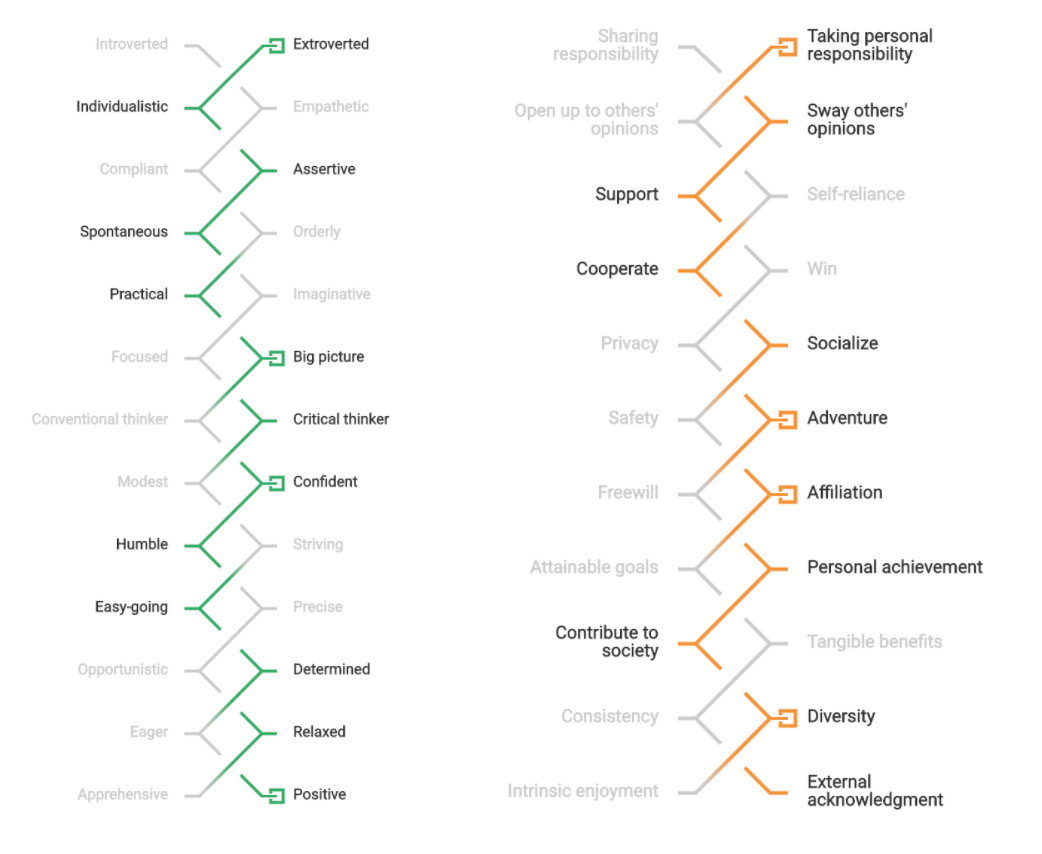
When it comes to motivating our team, the most important things are that we have Personal Responsibility for our work, but still have a Need for Affiliation and to share common interests with our peers. We also like to be kept on our toes with a Need for Adventure and Diversity — we like to spice things up around here!
Why this is important
The purpose of the Group DNA feature, and assessing your team’s soft skills, is to help visualize the data. The information provided is not necessarily indicative of work performance, but it can be used to understand the work culture of a population.
By understanding this data and keeping up to date with the DNA of your team, you can work to create an ideal work environment by setting relevant goals and rewards, as well as by solving conflicts the right way!
Are you interested in learning more about the upcoming Group DNA feature, or are you looking for additional resources and support? Email Talentoday at customer@talentoday.com to learn more about our assessment and services!
Build Your Team Using Soft Skills
In the pandemic-impacted spring of 2020, puzzle sales were up 300% from the year prior¹. I have to admit that I contributed more than my share to that increase in sales; you can only watch so much Netflix before you need to find a new in-home activity!
What I’m trying to say is that I spent a lot of time in front of puzzles this year and I’ve learned one valuable lesson: teams are a lot like puzzles. That is our metaphor for today.
We don’t always know what our missing pieces will look like
When you are looking for the perfect piece for your puzzle you might have the exact picture of what you are looking for in your head. You know what the surrounding pieces look like (what their strengths are) and you just need to find the piece that looks like those ones. The problem with putting too many constraints on what we want is that oftentimes as human beings we’re wrong. Although there might be certain characteristics that we know we need for a position, that doesn’t mean that we know all of the important aspects.
When interviewing candidates, it might seem like we know exactly what soft skills are needed for success. After all, why wouldn’t you just find someone who looks just like your top performers? To start, there are a lot of positions where two opposing traits can come in handy! Someone who is extroverted can be just as successful in a position as someone who is introverted. Same goes for people who are patient versus being eager, or imaginative versus practical. That brings us to our next point — similarities and differences.
Some pieces look similar, but the differences in pieces are what create the whole picture
When every person on your team thinks exactly the same way, you lose something very important in teamwork: Diversity of Thought². When hearing this term you might automatically think of gender, race, background, or age. While all of these things are important, another aspect of diversity can come in when looking at — that’s right — soft skills.
When teams are collaborating on a project there are aspects of their personality or motivations that can be helpful to have similarities in. However, if you have a team full of extroverted people, you might find it hard to get on track. If your team is full of big picture thinkers, you might find yourself with a lot of ideas and not a lot of action items. If everyone on the team is very precise, you might end up spending more time on the details than necessary. Find the gaps in your team and keep that in mind when you are looking for new people to join your organization.
Each piece is unique and has a place, even if it’s not where you originally thought
Let’s say you hire an individual who you thought was the perfect fit for a team and they’re not doing quite as well as you thought. Before giving up on that person take some time to get to know their soft skills. What are their personality strengths? Are you utilizing these strengths in their position? Do these strengths have a place in their current position in the team? What motivates this person? Are you fulfilling those motivations as a manager or teammate, or is their work fulfilling those motivations?
See if there is another place where that individual can thrive, even if there are some skill gaps to address. People are the most important asset to an organization³ so before getting rid of a good hire, see if they were just in the wrong position.
Once your pieces are where they belong, you can create something amazing!
Every person is unique. Even when there are shared qualities within a team nobody thinks, is motivated, or behaves in the exact same way. Those differences are what make a team stronger, more creative, and ready to tackle whatever challenges they might face!
Using MyPrint® to put together your team
For more ways to understand your team’s soft skills on an individual and group level, check out our MyPrint® assessment and keep reading to learn more about some of our features included in the Talentoday Manager platform!
One Pager: Use this one page summary of an individual’s results to see their top 3 personality strengths, top 3 motivators, and 3 most prominent professional behaviors.
Premium Report: This 20+ page report gives in depth information about every personality and motivation dimension that is measured in the MyPrint® assessment, including strengths and tips to working with that individual. Additional information about the 11 professional behaviors are included, along with suggested interview questions to help you go more in depth when getting to know someone!
Collaboration Report: View two individuals’ most similar and different personality traits, as well as top motivators and behavior synergies in a side-by-side comparison.
Target Profiles: Use pre-made templates or create your own target profile to see where your team has similarities. From there you can determine if these traits are beneficial to the position, or use this tool to determine the soft skill gaps in your team!
Stay tuned for some new, exciting features in 2021! Get more insights on your team as a whole on all personality and motivation dimensions, as well as understanding how individuals’ behaviors synergize with one another.
Looking for additional resources and support? Email Talentoday at customer@talentoday.com to learn more about our assessment and services!
Sources
²https://www.businessinsider.com/the-future-of-workplace-diversity-is-here-2013-9
Let’s Get Social!
Take a minute to think of as many social media platforms as you can. How many of those do you have an account with? How many do you visit on a daily or weekly basis? What type of interactions do you hope for when you log on, and are they different from what you experience?
Social media is pretty wild when you think about it. My grandma grew up during the Great Depression and now she has four Facebook accounts. Not because she has capped out on the friend limit for each one, but because she has forgotten her password that many times.
We can connect with our childhood friends that we haven’t seen in decades, catch up on world news and events, see all the cute dog videos and join groups of people who share our interests, all with just a few clicks! There are obviously unavoidable negative aspects to social media as well, but my positive personality is going to focus on how we can add some sunshine to our timelines!
Our social media campaign
We want to get connected with YOU! Our Talentoday family spans the entire globe. To feel more connected as a global community, we like to showcase our unique traits by inviting our members to share their MyPrint radars to their social media networks. You’ll see us doing this periodically throughout the year because, let’s face it — we can’t get enough of you!
How to get started
First order of business is to take a MyPrint assessment (if you haven’t done that yet, you can do so here). This takes an average of about 25 to 35 minutes to complete, and it’s best to try to take it with minimal distractions around. You can learn more about MyPrint and the science behind the assessment in this blog post!
Immediately after you complete the questionnaire, you will see your results in your profile. Take some time to check those out, learn more about your strengths and what makes you unique! In your profile you will be able to view your personality radar, motivations and behaviors, as well as download your free One Pager report to view your top three traits for each section!
YAWP!
As the late, great Robin Williams says as he plays Mr. Keating in Dead Poets Society, we all have something inside of us that is worth a great deal.
“I sound my barbaric yawp over the rooftops of the world”
-Walt Whitman, Song of Myself
We all have unique traits that make us who we are and those should be celebrated and proudly proclaimed to the world! So to sound those MyPrint yawps over the metaphorical rooftops of the world, we have put in buttons so you can easily share what makes you special to your social media networks! When you share your radar, include our hashtags so that we can connect as a global community.
Let’s work together to add some sunshine to our timelines and show the world what makes us unique!
Looking for additional resources and support? Email Talentoday at customer@talentoday.com to learn more about our assessment and services!
Closing the Skill Gap & Optimizing Your Workforce
We can all agree that the only constant is change, right? For example, look at your life 6 months ago and compare it to now. Pretty different, isn’t it? Okay, maybe that’s not a fair example because of the whole “global pandemic thing”; but pandemic aside, things are constantly evolving in all aspects of our lives. Your phone software is continuously being updated even if you have the same phone. Fast food restaurants are using touch screens to place orders. Every new model of car has a button that does something our cars didn’t do before. We wear masks to go to the grocery store and we are all finally getting the personal space we desire (let’s be honest, we can’t really push the whole pandemic thing aside).
It might seem like technology is taking over the world, but remember that behind every new technology are the humans that created it. We shouldn’t be competing with technology but rather learning how to coexist with it. Using technology to improve our processes and harnessing our human power in more efficient and effective ways is how we will beat the robots! (…and stay ahead of the skill gaps!)
Internal Mobility
Before we get too far into this blog post, I want to make sure we’re all on the same page about Internal Mobility. This is when an organization is recruiting for positions within their current workforce¹. For example, if there is a need for a new position within an organization or if someone leaves their role then the candidate pool would come from individuals already working at that organization. There are so many benefits to Internal Mobility, both economical and cultural. I suggest you check out the webinar recording for that!
“But what if the new role requires skills that nobody else in the organization possesses?”
That’s what our blog post is really about today: closing those skill gaps!
Upskilling and Reskilling
Upskilling is used when you are taking the skills that a person already has and improving on those skills². A great example of this is technology. Although someone might be proficient in Microsoft Excel, for example, they could go through courses that help them utilize more tools and functions in Excel that they did not know about before. When upskilling an individual within an organization, the goal is to keep them in their same position while improving their performance and adapting to changes within their environment.
Reskilling on the other hand deals with teaching an individual completely new skills². These can be hard or soft skills, and the goal is to provide an employee with the tools needed to move into a brand new position.
How do soft skills play a role in this?
As you know we are all about soft skills here at Talentoday! If you thought we were going to have a blog post that didn’t mention soft skills then you, my friend, were very wrong. Did you know that 94% of employers consider soft skills to be a key element of success in the workplace?³. This isn’t to say that hard skills are not important — just that we’re going to focus on our soft skills today.
Think about your current position. What was it that got you that role? It might be your education, your knowledge of a specific technology or product, or maybe your prior years of experience. Now think about what makes you successful in your role. These are probably going to be your soft skills: your ability to communicate, think critically, pay attention to details, or make decisions. This is why soft skills are so important; they play a huge role in one’s success in the workplace, and they sometimes go unnoticed!
Target Profiles
Assessing your workforce is the best way to keep up to date with the skills that you currently possess and also the skills that you need growth in. Our MyPrint assessment and Talentoday Manager platform are a great way to assess and visualize your workforce’s soft skills.
Within the Talentoday Manager platform we have a Target Profile feature to help visualize the 8 most distinct personality and motivation traits for a group of individuals. This can be a custom group of people or based around a single job title or function. Below is what the Target Profile for Sales looks like, which is one of the Target Profiles that is built into the Talentoday platform.
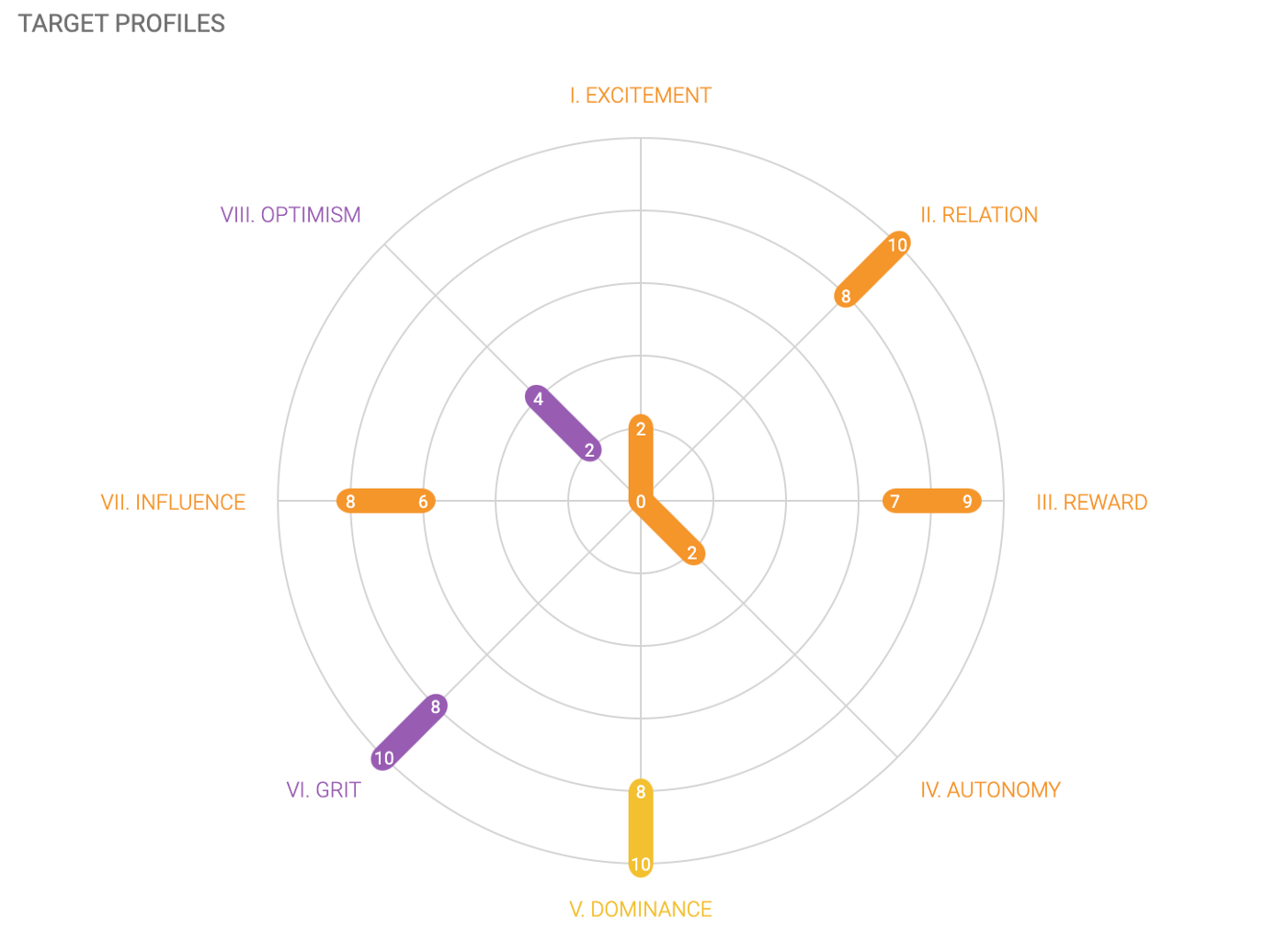
Now let’s put this to use — let’s say that I wanted to move into a Sales role. We could then match up my MyPrint results on top of the Target Profile for Sales to see the areas where I have the biggest gaps.
Right away we can see that I am a 47% match for a Sales profile. Does this mean that you should lose all hope in my ability to be a sales person? Not at all! This Target Profile should be screaming opportunity at you! One area of concern would be that I am very high on Optimism (shocker, I know). Knowing this, I would probably need some training on when, where, and how to use my positivity. I wouldn’t make any sales if I responded to clients’ concerns with “It’s fine, everyone experiences bumps in the road! You are still profiting though so you are doing great!” (Sorry to all of the sales people out there who just panicked a little bit).
When an employee is moving into a new role it is key to understand what skills they possess, as well as the talent gaps they need to fill, in order to set them up for success. Just because someone isn’t a 100% match for a new position does not mean that they are a lost cause. People are capable of learning and growing not only with their hard skills, but with soft skills as well!
In conclusion…
Technology is taking over the world. Okay, maybe not completely. Technology is constantly changing though, and with that comes a change in our workforce. By understanding the skills that your workforce currently possesses you can stay on top of the skill gaps that are sure to come your way. By investing in your people, you will be able to optimize your workforce to be the most successful that they can be!
If you’d like to view our webinar on Upskilling and Optimizing Your Workforce, or if you’d like more information about Talentoday, please visit www.talentoday.com or contact our experts at contact@talentoday.com.
Sources
1 Whelan, P. (2019). Why internal mobility is key to building the workforce of the future. HR Technologist. https://www.hrtechnologist.com/articles/recruitment-onboarding/why-internal-mobility-is-key-to-building-the-workforce-of-the-future/
2Agrawal, S., Poplawski, P., Reich, A., & De Smet, A. (2020). Beyond hiring: How companies are reskilling to address talent gaps. McKinsey & Company. https://www.mckinsey.com/business-functions/organization/our-insights/beyond-hiring-how-companies-are-reskilling-to-address-talent-gaps
3Chelovechkov, A., Lefkowitz, R., Spar, B., & Van Nuys, A (2019). 2019 Workplace Learning Report. LinkedIn Learning.
Preventing Employee Burnout
When was the last time you were recognized for your hard work, whether it was from supporting another team, leading a meeting, doing a presentation, or even just getting through a large workload? Chances are this is something common to receive praise for, both from your colleagues as well as your friends or family. Now think of the last time that you received similar praise for taking a bubble bath, meditating, or going for a walk. You most likely haven’t received as much as a pat on the back for partaking in any of these activities.
Obviously those are two completely different and unrelated things, right? Well, kind of. However if you are receiving praise for doing something, you are likely to continue doing that thing, right? So if we are constantly being praised for working hard, but rarely for self-care, then what happens? That, my friends, is the topic of the day: Burnout.
What is burnout?
So what is burnout anyways? Essentially, burnout is overworking yourself to the point of physical, mental or emotional distress². Everyone has a different threshold for how much they can work before experiencing burnout, but a huge factor in this is how you feel about the work you are doing. When you are satisfied with your work — when you are engaged and motivated — you are less susceptible to the stressors that can bring not only mental or emotional, but also physical distress to your body³.
What causes burnout?
There are multiple factors that can lead to employee burnout, but one of the main things is the lack of satisfaction that one has with their work¹. Some people are lucky enough to have found work that brings them great joy, and even these individuals are able to experience burnout.
When work stressors build up over time, they will eventually boil over and lead to burnout. This can result from having an unclear idea of what you are supposed to be doing in your role, taking on too many responsibilities, lack of recognition, working long hours, or not carving out time to take care of yourself. These are just a few of the factors that can lead to employee burnout, especially if no preventative measures are being taken.
Why is this something I should be concerned about?
As we have mentioned before, burnout can have an impact on your mental, emotional, and physical wellbeing³. Mentally, burnout can make it hard for someone to focus, and they will often be distracted and have difficulties getting their thoughts together. Emotionally, it can lead to irritability and detachment from others. Physically, burnout can lead to multiple issues such as headaches, sleep disorders, and even cardiovascular disease.
Preventing burnout
The first step to preventing burnout, is learning more about yourself and your employees. Understand what it is that motivates you and your team, and make sure that those motivations are being fulfilled. Research shows that individuals who are motivated and engaged in their work are less likely to experience burnout¹.
Rather than guessing based on gut feelings, or trying to motivate an entire workforce in the same way, you can assess your team to discover the unique ways to motivate and engage them. Leveraging tools such as MyPrint® can help you assess your team and help you motivate and engage your workforce in a more effective manner. Click here to read our blog post from earlier this year on step by step instructions on how to engage your remote workforce using MyPrint®, and see the chart below for more ways to motivate your team!
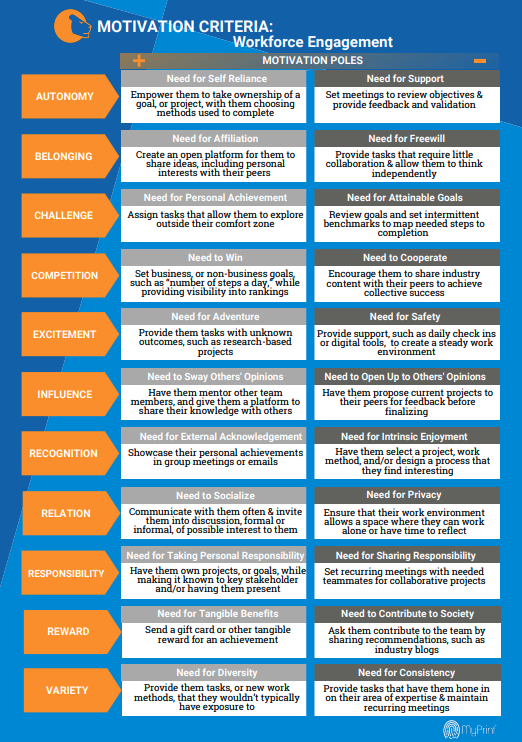
Even if you are the most motivated, satisfied, engaged individual, that’s still not enough to fully prevent potential burnout. Finding work-life balance is just as important! Here are some tips to set you up for success:
- Set boundaries: Set a time to consistently end your work day, and try to stick to it as much as you can. Restrict checking emails in the evenings, or turn off the alerts so you are less tempted.
- Time blocking: Set aside time on your calendar to ensure you get your work done if you find yourself constantly in meetings. Schedule short breaks if you are not someone who naturally takes breaks throughout the day.
- Have a designated work space: If you are working remotely, or often find yourself working at home, have a designated space for work (if possible) that is separate from where you like to relax and spend your personal time.
- Take breaks: Take time during the day for a mental break. This can include taking a coffee break, going for a walk, closing your eyes for a minute, or doing anything that is not work related.
- Find what makes you happy outside of work: Find a hobby that brings you happiness, spend time with your loved ones, get exercise or spend time in nature — find something that will increase your life satisfaction outside of work.
To sum it up…
If you have been feeling a little overworked or stressed out, use this as your sign to take care of yourself! Take a break. Meditate. Go for a walk. Take a minute to stretch or do yoga. Read a book. Cook a nice meal. Learn a new instrument. Do something for yourself to help find that perfect balance between work and play!
If you’re interested in using MyPrint® to motivate and engage your workforce, please visit www.talentoday.com or contact our experts at contact@talentoday.com
Sources
¹ Duffy, Dik, Douglass, England, & Velez (2018). Work as a calling: A theoretical model. Journal of Counseling Psychology, 65(4), 423–439.
² Maslach, C. (2003). Job Burnout: New Directions in Research and Intervention. Current Directions in Psychological Science, 12(5), 189–192.
³ Smith Bailey, D. (2006). Burnout harms workers’ physical health through many pathways. Monitor on Psychology, 12(5), 11.
Introducing the MyPrint® Assessment
Think about your first cell phone. What features did it have? What technology has remained consistent, and what has evolved over time? Would you prefer to be using that same technology today?
Just as our cell phones change over time, other things in our lives evolve as we grow in our abilities and develop as a society. Among those is our soft-skills assessment here at Talentoday!
mYti© to MyPrint®
If you have been a member of our Talentoday community, then you’ve probably experienced the mYti© assessment, our original personality and motivations questionnaire. If you visit our website today, you will see the latest innovation in Talentoday’s science, MyPrint®, our brand new soft skills assessment. MyPrint® still measures personality and motivations but in an even more accurate way than before!
Theoretical Background
The theoretical background of the MyPrint® assessment is based on long-standing theories of personality and motivations within the psychology community. The personality dimensions are based on the Five-Factor Model of personality, which is considered the standard in personality trait measurement across cultures and has been proven reliable by more than 40 years of research¹. Our motivation dimensions are derived from Maslow’s Hierarchy of Needs² and the Self Determination Theory³, both of which left a strong legacy in the definition and measurement of motivational factors⁴.
Our Dimensions
Think back to our cell phone analogy. Your first phone probably had a lot of the same features that your phone has today (such as texting and calling capabilities) but they might look a little bit different; for example, now most cell phones have the ability to voice text or video call.
In the same way, the MyPrint® assessment has a lot of the same features as the mYti©. These features may look different, however. For example, we are still measuring personality and motivations and providing information about professional behaviors. Some of our scales have remained the same, such as Patience, and others are simply represented in a new way. For example, the Creativity scale is no longer a part of the personality radar, but it can still be found in our professional behaviors. With this change, we have been able to simplify our personality radar and motivation chart, without compromising member results.
Our Science
In addition to the scales and dimensions that we have updated, you might also notice that the questionnaire itself has changed. This is because we have updated the “behind the scenes” statistics and calculations for the assessment to use cutting edge technology, a lot like what happens when your phone receives a software update.
Just like the mYti© assessment, the MyPrint® uses “forced-choice” questions. This format provides two statements that are equally desirable, so it takes away what is called the Social Desirability Bias of trying to find the “right answer” to the questionnaire and gives the user the freedom to answer in the most truthful way possible.
The MyPrint® questionnaire takes the forced-choice question format one step further to not only have the user choose the statement that fits them the best, but to indicate to which extent that statement better suits them. This concept is called “multidimensional binary forced-choice with graded preferences” — one of the most recent and useful innovations in psychometrics⁵. More importantly, this is how Talentoday is able to achieve greater accuracy through developing our new MyPrint soft-skills assessment.
Experience the MyPrint®
The best part about a new phone is getting to try it out and see all of the new features! Now that you know more about our updated product, try it for yourself! Visit www.talentoday.com and take the MyPrint® assessment. If you want to learn more about our science click here and download the MyPrint® Technical Manual!
If you’re interested in your own one page report, premium report or in learning more information about Talentoday, please visit www.talentoday.com or contact our experts at contact@talentoday.com.
¹ Barrick, M. R., & Mount, M. K. (1991). The Big Five personality dimensions and job performance: A meta-analysis. Personnel Psychology, 44(1), 1–26.
² Maslow, A. H. (1943). A theory of human motivation. Psychological Review, 50(4), 370‐396.
³ Deci, E. L. & Ryan, R. M. (2000). Self-determination theory and the facilitation of intrinsic motivation, social development, and well-being. American Psychologist, 55, 68–78.
⁴ Costa, P. T., & McCrae, R. R. (1985). The NEO Personality Inventory manual. Odessa, FL: Psychological Assessment Resources.
⁵ Brown, A., & Maydeu-Olivares, A. (2017): Ordinal Factor Analysis of Graded-Preference Questionnaire Data. Structural Equation Modeling: A Multidisciplinary Journal, 25(4), 516–529.
Employee Friendships in 2020
If you’re like me, you’re probably missing your work friends right now. Even if you’re not like me there’s still a pretty high chance of that! Millions of people around the world have been working from home amidst the COVID-19 pandemic, and working in pajamas has become the new normal… okay, maybe not everyone is in pajamas.
Even though we might not be seeing our work pals it is important to find ways to stay connected. A study by Gallup¹ found that workplace friendships are one of the strongest predictors of productivity. In addition, those who have strong work relationships are more engaged, produce higher-quality work, and have an overall higher state of well-being. That same study found that in order to have a thriving day we need at least six hours of social time. Sound impossible? It’s not as difficult as you might think.
The ‘New Normal’
With the ‘new normal’ in the workplace including remote work, social distancing procedures, alternating schedules, and other obstacles that make our social interactions more difficult to achieve, we need to be more intentional about our workplace friendships. These challenges are something that every company is learning to navigate, and it does not have to come at the expense of employee relationships and well-being.
A study done in New Zealand after a series of earthquakes forced many people to move into remote working found that the biggest area of concern to employees was the social cost². This included professional and personal isolation, limited team interaction, loss of visibility and development, and lack of face-to-face communication. Thankfully we live in an age where technology can be our friend and counteract a lot of these concerns!
Zoom, Zoom, Zoom!
Raise your hand if you have used Zoom in the past month. There have been between 200–300 million daily meeting participants on Zoom during the beginning months of COVID-19³. Birthday parties, happy hours, book clubs, classes, and business meetings are just a few of the many social gatherings that have turned virtual in 2020. Leveraging video conferencing can help bring employees together as well!
Do you normally eat lunch with your coworkers every day? Maybe pick one day each week to have a ‘virtual lunch’ with those that you’d normally (or not normally) eat with. Even a quick instant message to your work buddies to ask a question, or simply share what you’ve been binge watching on Netflix, can help add to that six hours of social time needed for a thriving day!
Working in a virtual environment also gives employees the opportunity to reach out to those that they would not normally have the opportunity to work with. Whether it is collaborating on a project with individuals in other offices or departments, or simply reaching out to colleagues to get to know them better, the virtual workplace gives everyone a chance to create new connections that aren’t determined by physical proximity.
MyPrint® for the Virtual Age
With virtual and remote teams being the new normal, it might take a little more creativity to bring your team together! Some fun events that we at Talentoday have done to stay connected are virtual happy hours, knowledge sharing sessions from different departments, and a MyPrint® ‘Guess Who’ game!
As new teammates are being onboarded into a virtual workplace, it can be difficult to get to know each other in the same way you would when meeting face-to-face. You can help to jumpstart these new workplace connections by leveraging a lot of the tools that the MyPrint® assessment provides! Sharing your dominant personality traits, learning how to motivate one another, or reading through your Collaboration Report together can help alleviate some of the pains that come with a virtual working relationship.
No matter what your new normal looks like, whether it is back in the office or in your pajamas at home, MyPrint® can help you and your team to continue to adapt and grow together!
Looking for additional resources and support? Email Talentoday at customer@talentoday.com to learn more about activities like the MyPrint ‘Guess Who’ game and other services!
References
¹ Rath, T. & Harter, J. (2010). Your friends and your social well-being.
Business Journal.
https://news.gallup.com/businessjournal/127043/friends-social-wellbeing.aspx
² Donnelly, N. & Proctor-Thomson, S. B. (2015). Disrupted work: Home-based teleworking (HbTW) in the aftermath of a natural disaster. New Technology, Work and Employment, 30(1), 47–61. https://doi.org/10.1111/ntwe.12040
³ Iqbal, Mansoor (2020). “Zoom Revenue and Usage Statistics (2020).” Business of Apps, www.businessofapps.com/data/zoom-statistics/.


